Tuna Poke Bowls
This post may contain affiliate links. Read my full disclosure policy.
Tuna poke is a traditional Hawaiian salad of raw tuna marinated in soy sauce, sesame oil, and onions. Here it’s served over sushi rice with your favorite toppings.
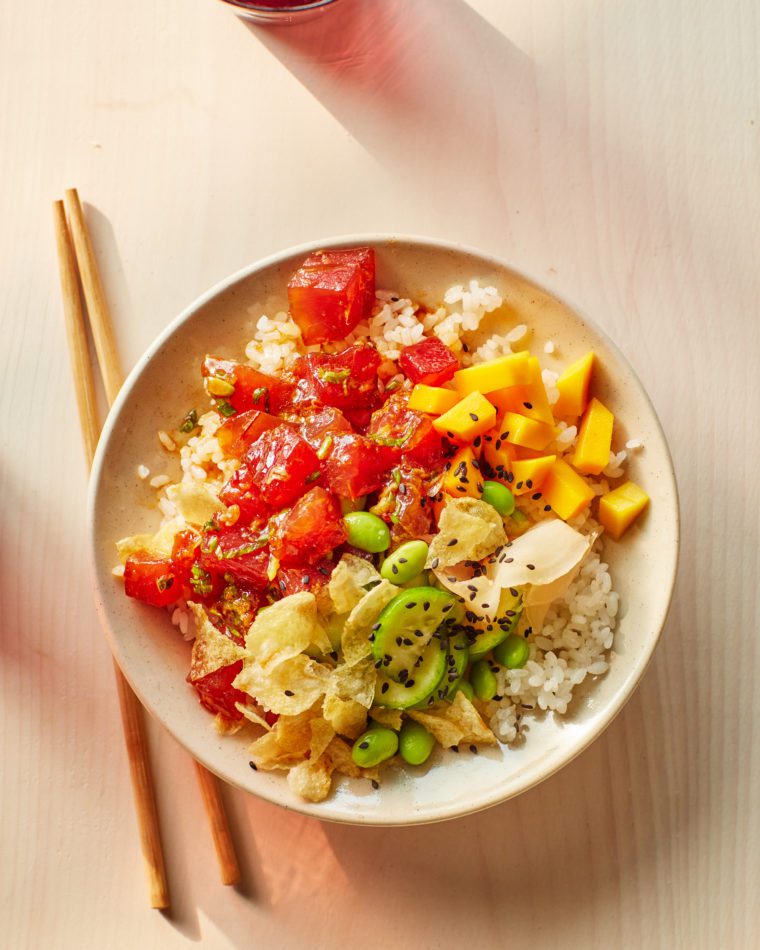
Photo by Johnny Miller (Clarkson Potter, 2021)
Many years ago, after visiting our son at sleepaway camp during the summer, Michael and I spent a weekend at a a spa resort in the Poconos called The Lodge at Woodloch. I love all that Zen spa stuff, but Michael joked that the place was named “Woodloch” because they lock you in the woods with nothing to do and starve you with teeny-tiny portions. Spa cuisine: sooo not his thing. However, we both loved the resort’s take on tuna poke (pronounced po-kay), a traditional Hawaiian salad of marinated raw tuna with sushi rice and lots of toppings, so I came up with this similar version when we got home. The resort dish was served with fresh crispy-fried wontons; to keep things weeknight streamlined, I put potato chips on mine instead! They make a delicious (and easy) addition.
What you need To Make Tuna Poke Bowls
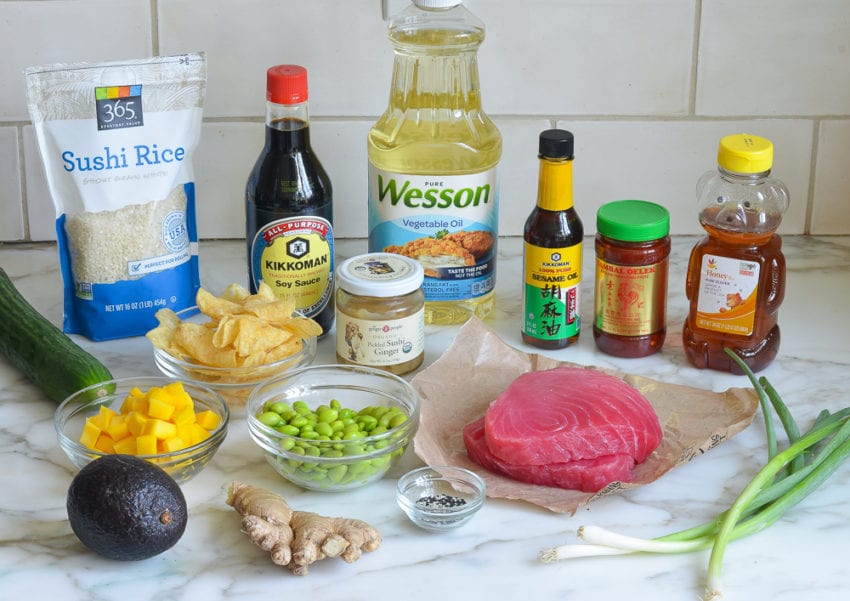
When selecting your tuna, be sure to get fresh sushi-grade yellowfin or bigeye tuna (both referred to as “ahi”), with a pink or reddish color. Locally (in the Washington, DC area), I’ve found fresh ahi tuna at Harris Teeter. Also, Whole Foods carries frozen yellowfin tuna that works nicely. Just be sure not to buy Albacore tuna, which is the white tuna used to make canned tuna fish.
How To Make Tuna Poke Bowls
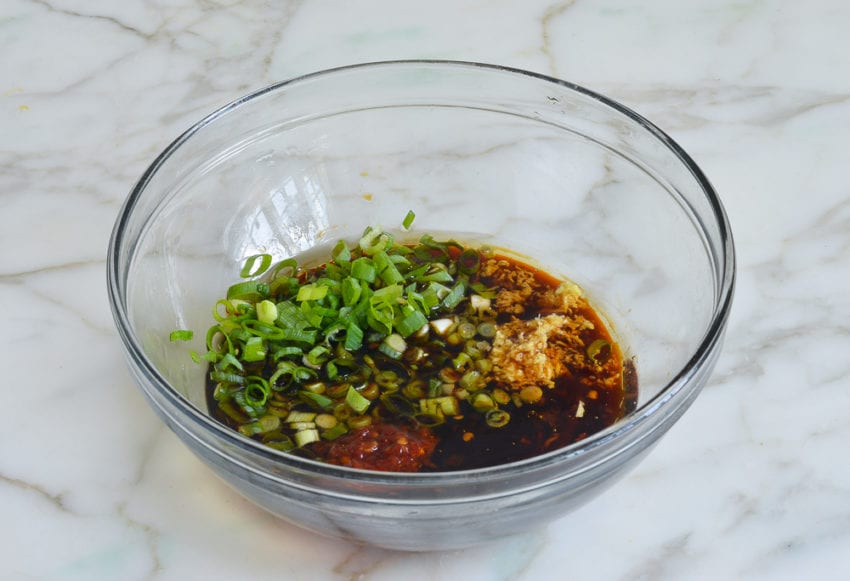
To begin: In a medium bowl, whisk together the soy sauce, vegetable oil, sesame oil, honey, sambal oelek, ginger, and scallions.
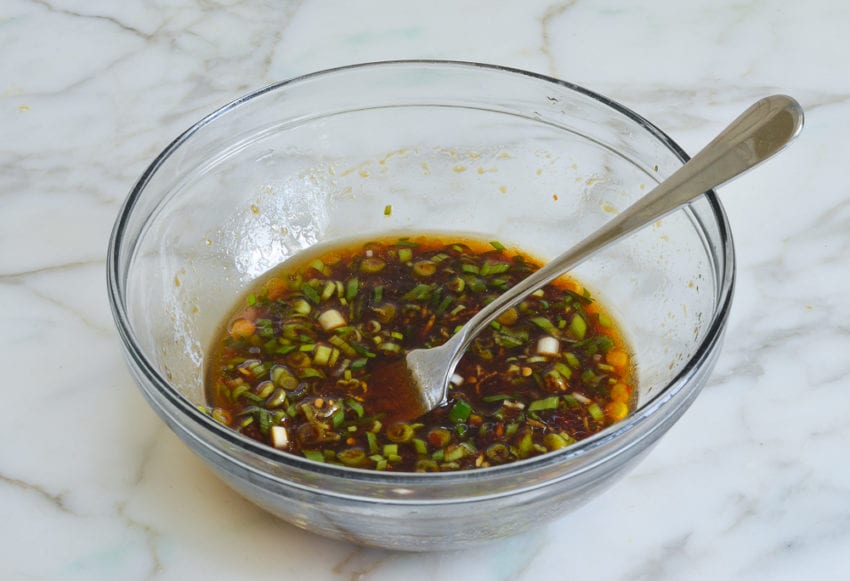
Add the tuna and toss. Let the mixture sit in the fridge for at least 15 minutes or up to 1 hour.
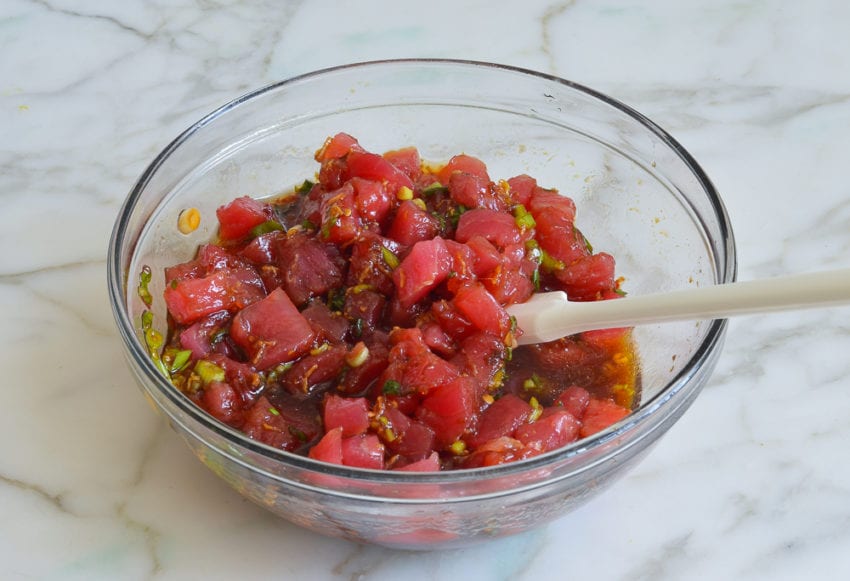
To serve, scoop rice into bowls, top with tuna poke and desired toppings.

Photo by Johnny Miller (Clarkson Potter, 2021)
You may also like
- Black Bean Shrimp Salad with Corn & Pickled Onions
- Slow-Roasted Salmon with Fresh Herb Salsa
- Old Bay Shrimp Salad
- Egg Roll in a Bowl
- Roasted Salmon Quinoa Bowls with Avocado, Cucumber & Green Goddess Dressing
Tuna Poke Bowls
Tuna poke is a traditional Hawaiian salad of raw tuna marinated in soy sauce, sesame oil, and onions. Here it’s served over sushi rice with your favorite toppings.
Ingredients
- ¼ cup + 2 tablespoons soy sauce
- 2 tablespoons vegetable oil
- 1 tablespoon sesame oil
- 2 tablespoons honey
- 1 tablespoon Sambal Oelek (see note)
- 2 teaspoons fresh grated ginger (see note)
- 3 scallions, white and green parts, thinly sliced
- 1 pound sushi-grade ahi tuna (such as yellowfin or big-eye tuna), diced into ¼ or ½-inch pieces
- 2 cups sushi rice, cooked according to package instructions (any other type of rice or grain can be substituted)
Optional Toppings
- Sliced avocado
- Sliced cucumber
- Edamame
- Pickled ginger
- Diced mango
- Potato chips or wonton crisps
- Sesame seeds
Instructions
- In a medium bowl, whisk together the soy sauce, vegetable oil, sesame oil, honey, sambal oelek, ginger, and scallions. Add the tuna and toss. Let the mixture sit in the fridge for at least 15 minutes or up to 1 hour.
- To serve, scoop rice into bowls, top with tuna poke and desired toppings. You will have extra sauce for drizzling over the toppings; serve on the side.
- Note: Sambal Oelek can be found in the Asian section of most supermarkets. It is sometimes labeled Chile Garlic Sauce.
- Note: Check out easy guidance on how to peel, grate, and chop fresh ginger here.
Nutrition Information
Powered by ![]()
- Per serving (Nutritional data does not include optional toppings -- 6 servings)
- Calories: 411
- Fat: 8 g
- Saturated fat: 1 g
- Carbohydrates: 59 g
- Sugar: 6 g
- Fiber: 0 g
- Protein: 24 g
- Sodium: 943 mg
- Cholesterol: 29 mg
This website is written and produced for informational purposes only. I am not a certified nutritionist and the nutritional data on this site has not been evaluated or approved by a nutritionist or the Food and Drug Administration. Nutritional information is offered as a courtesy and should not be construed as a guarantee. The data is calculated through an online nutritional calculator, Edamam.com. Although I do my best to provide accurate nutritional information, these figures should be considered estimates only. Varying factors such as product types or brands purchased, natural fluctuations in fresh produce, and the way ingredients are processed change the effective nutritional information in any given recipe. Furthermore, different online calculators provide different results depending on their own nutrition fact sources and algorithms. To obtain the most accurate nutritional information in a given recipe, you should calculate the nutritional information with the actual ingredients used in your recipe, using your preferred nutrition calculator.
Gluten-Free Adaptable Note
To the best of my knowledge, all of the ingredients used in this recipe are gluten-free or widely available in gluten-free versions. There is hidden gluten in many foods; if you're following a gluten-free diet or cooking for someone with gluten allergies, always read the labels of your ingredients to verify that they are gluten-free.

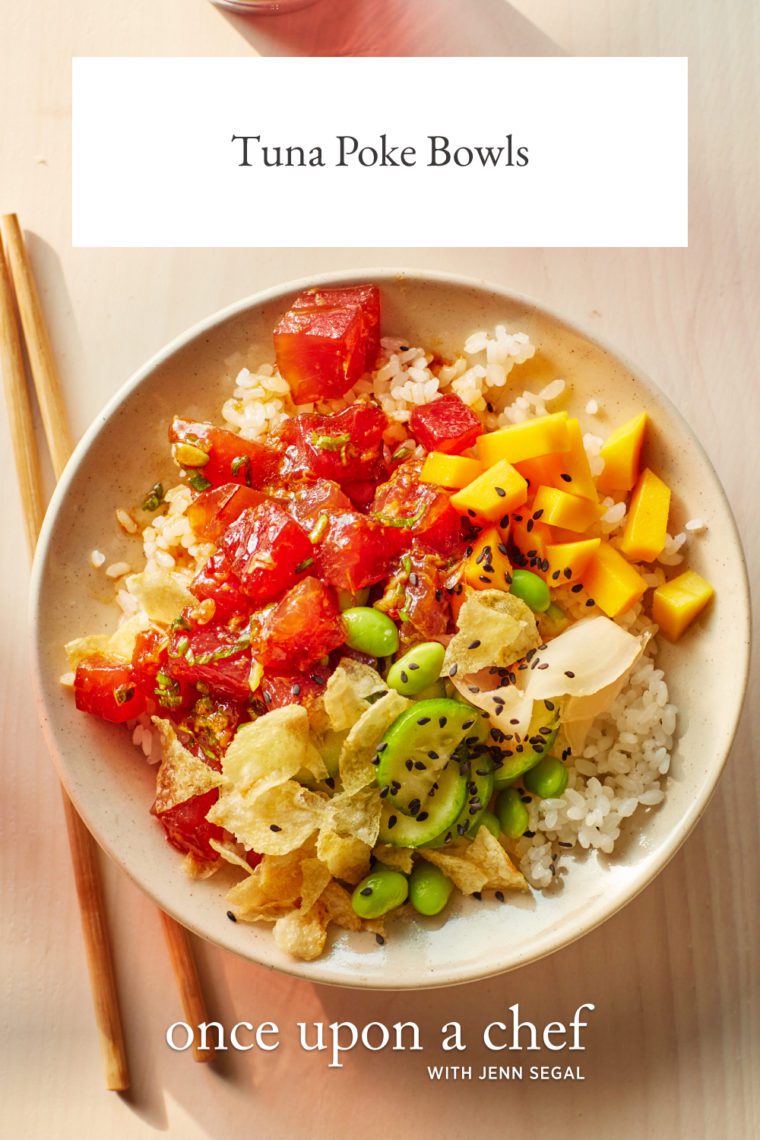
This recipe is absolutely delicious. I’m lucky that I can get fresh sushi grade tuna on a regular basis. I’ve served it the night I made it AND the next night, and the only difference was more intense flavor the second time. A personal note–I’m not a fan of ginger so I cut it in half, and it was still amazing. Also, when I made sushi rice, I added seasoned vinegar at the end, and this made the entire dish quite delicious. Yum!
I love your husband’s honesty. LOL hahaha
Can it be eaten next day too? Will the tuna still be ok?
Hi Jeanette, I think it really depends on how fresh the fish was when you purchased it (which you may not necessarily know). To be conservative, I’d air on the side of not eating it on the second day (also, it would get really salty by the second day as it continues to absorb the marinade).
My trick for eating it the next day, is to only add the amount of marinade to the portion of the tuna being eaten the night before, avoiding the over marinated scenario.
YUM, YUM, YUM. Another winner, Jen.
I made this tonight, and it was excellent! (as are all of Jenn’s recipes!) It was surprisingly quick and easy, and I will definitely be making again.
This recipe has a great flavor profile. It was a bit spicier than I was expecting. I have had poke bowls in restaurants that had less or no spice. As a result, I think this should be called Spicy Tuna Poke Bowl. When I make it again, I’ll certainly use the sriacha but probably a bit less.
Agreed!! So freaking spicy! Lol.
Really a delicious recipe! My family wolfed it down. I was suspicious about the honey but it balanced the flavors well. I served with mango, avocado, shaved cabbage, more chopped scallions, toasted coconut, and siracha mayo. Will definitely make this again and will try the potato chips on top too!
Do you serve it warm rice or cold ?
Hi Christine, I would eat it cold. Hope you enjoy!
Will it work with salmon?
Yep!
I am from Hawaii and your recipe is spot-on authentic. The trick is getting the fresh, raw ahi.
Unfortunately, I cannot each sushi, sashimi or poke as often as I would like. Now that the West has discovered the joy of raw game fish (marlin, tuna), we are eating the creatures to extinction.
Could you please tell me where to enter the contest for the cutting board? The page says to enter below, but there isn’t any place to enter or I am not seeing it. Thank you